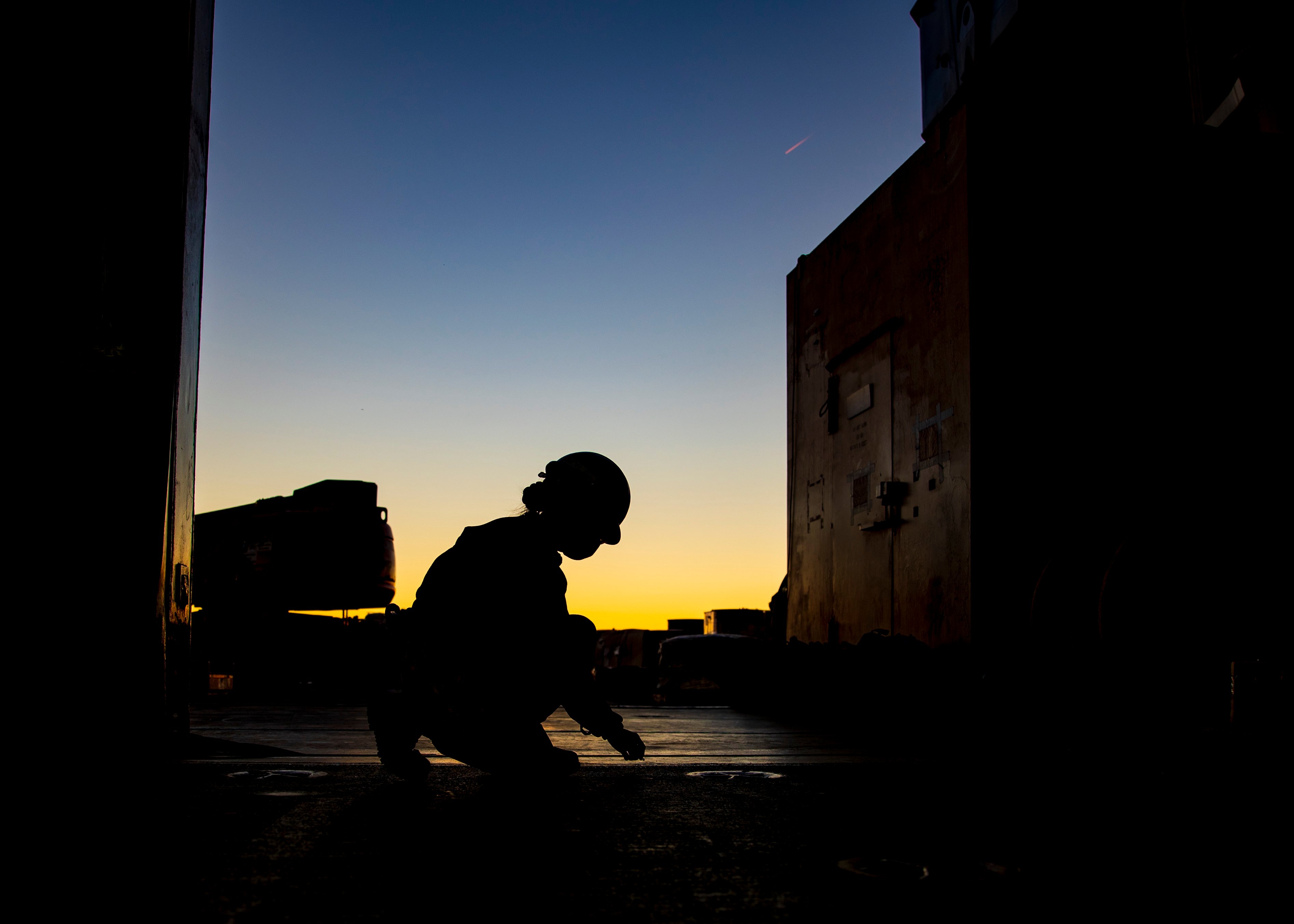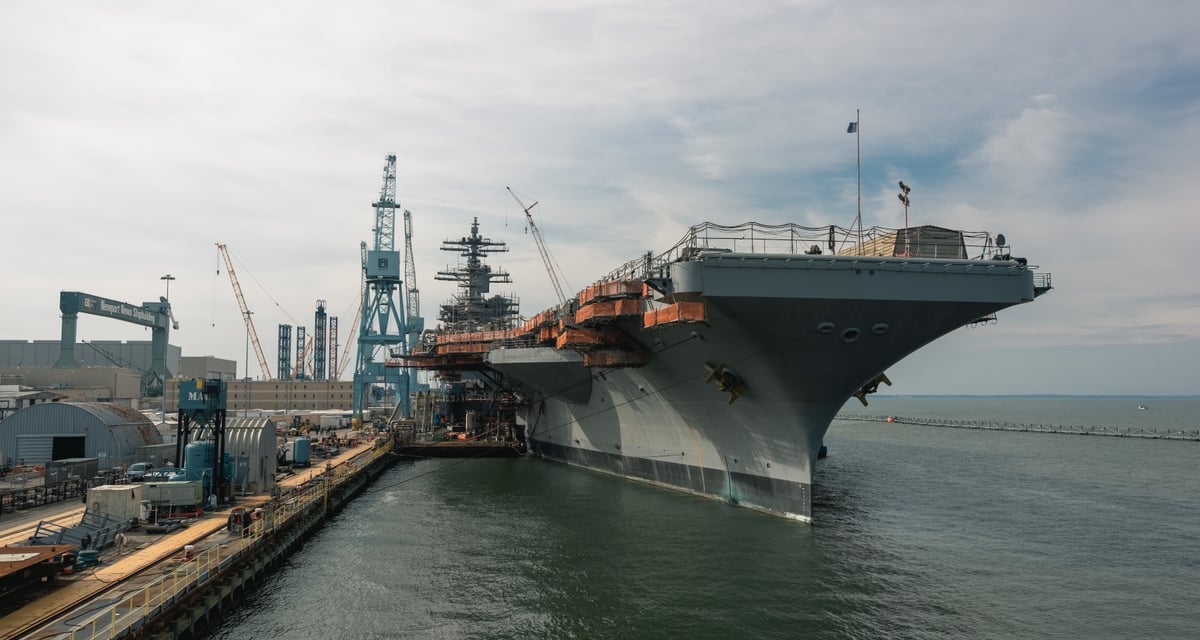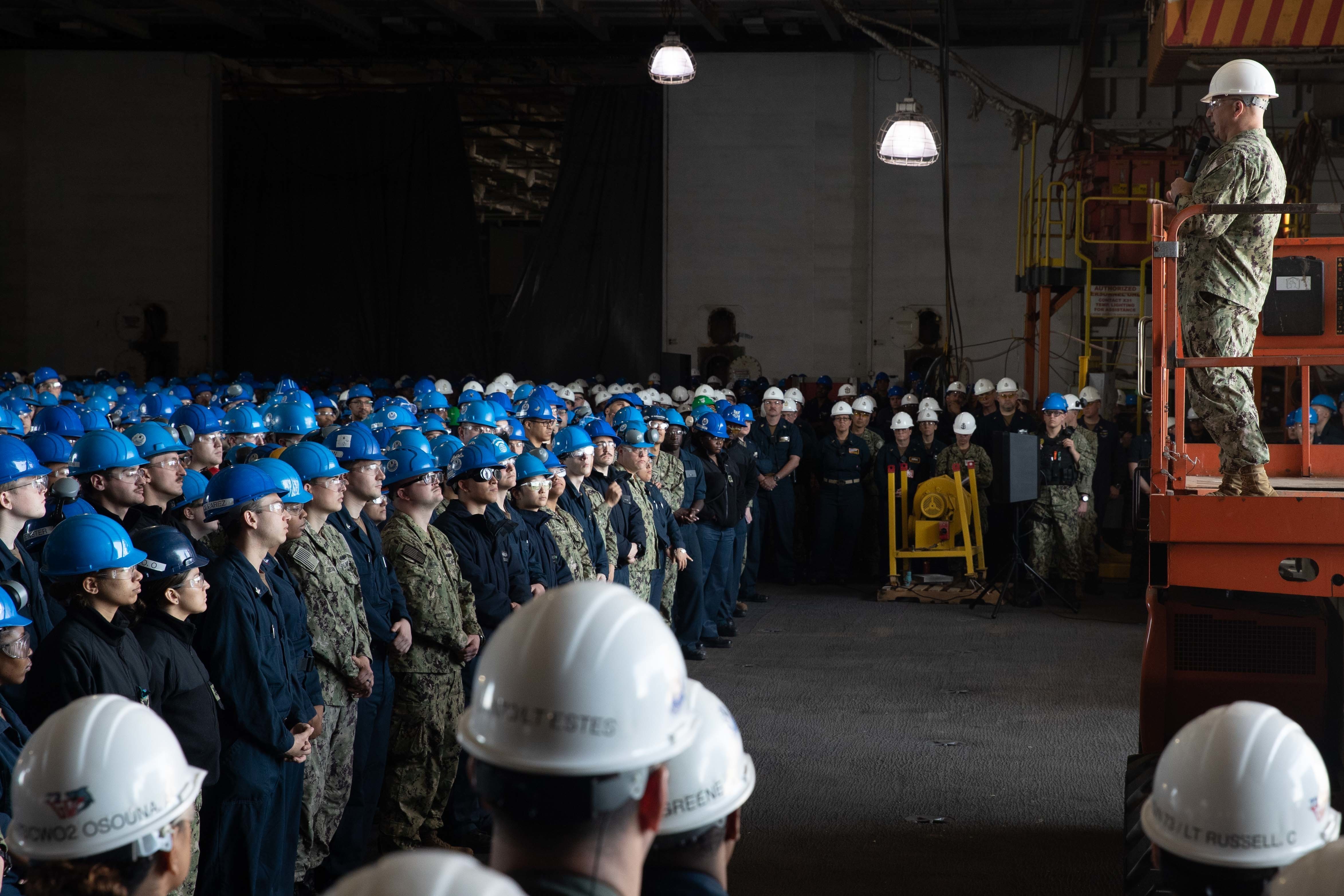
This story has been updated to correct the Navy’s suicide rate for 2021 and Master-at-Arms Seaman Recruit Xavier Mitchell-Sandor’s gun status.
An investigation into the circumstances surrounding the deaths of three USS George Washington (CVN-73) sailors who died by suicide in April found that the cases were largely unrelated but revealed an overworked mental health system aboard the carrier that had trouble keeping up with the demands of the crew.
The report, released this week concluded that while all three of the sailors experienced stress from George Washington’s extended refueling and complex overhaul period, they did not know each other, and each had unique personal factors that contributed to their deaths. The investigation looked into suicide contagion — the idea that one suicide can lead to another person thinking about taking their life — and it could not be ruled out.
“While [senior medical officer] did not believe there was the existence of a ‘suicide contagion’ onboard GW, psych boss stated that it is always possible, due to the number of deaths that had occurred, but it was ‘hard to say,’” according to the investigation overseen by Rear Adm. John Meier, commander of Naval Air Forces Atlantic with final endorsements by Naval Air Forces commander Vice Adm. Kevin Whitesell and U.S. Fleet Forces commander Adm. Daryl Caudle.
While the three sailors may not have had any connections to each other, the subsequent investigation into their cases revealed the overwhelmed mental health system aboard George Washington.
For a crew of 2,700 sailors, there is one behavioral health technician, one ship’s psychologist (psych boss) and two substance abuse counselors, according to the report. Between January 2021 and January 2022, there were 2,615 “patient encounters” with the behavioral health technician, the two counselors and the psych boss.
The report does not say how many sailors were seeking mental health services, as “patient encounters” could mean that the same sailors were seen multiple times. However, there was a persistent backlog of sailors trying to see the psych boss, with a wait of four to six weeks before initial appointments, according to the report.
That could mean sailors are waiting up to two months for non-emergent, initial assessments with the psych boss. The senior medical officer aboard George Washington spoke to his supervisor about the “overwhelming” load of mental health requests, according to the report.
The psych boss and the behavioral health technician, or psych tech, each saw up to 20 patients a day. The two had considered switching to group therapy to try and address the backlog, but group therapy had not been effective in the past.
The psych tech told investigators that it felt like the leadership, specifically “leading petty officers,” did not have the time to deal with mental health issues experienced by their subordinates, according to the report. Instead, they wanted to refer sailors to the psych tech and psych boss.
“Multiple sailors reported leadership doesn’t want to talk about, or otherwise feels uncomfortable talking about mental health issues with junior sailors,” according to the report.
The psych tech would see patients if they had emergent concerns before their initial appointment, according to the report.

Sailors could see non-military mental health professionals, but, often, the burden of the cost would fall on the sailor. Seeing a civilian mental health professional meant their records were not accessible to the military. Sailors had expressed concerns about the stigma around mental health issues, according to the report.
“Sailors in Security Department specifically noted that, if one of them were experiencing mental health concerns and sought help, they would be ‘red tagged,’ and thus be unable to carry a firearm and stand their watch. Some of these sailors noted that there was a negative perception of being ‘red tagged,’ as they would be unable to fulfill their duties,” according to the report.
There is also a deployed resiliency counselor for George Washington, but according to the report, many sailors did not know what the person did or where they were located. The counselor saw 46 sailors since January 2021.
Of the three sailors who died by suicide, only one sought out the Navy’s mental health services, including aboard George Washington, according to the report.
Interior Communications Electrician 3 Natasha Huffman had been seen by a previous psych boss, starting in 2019, but reported that she did not trust him, according to the report. She was also seen by a psychiatrist at Naval Medical Center Portsmouth. Multiple sailors told investigators that they did not trust the mental health care they received at the medical center, according to the report.
Huffman previously tried to kill herself, but it was not reported to the Defense Information Service System despite her hospitalization at NMCP.
Huffman, who had a mental health history that would have disqualified her from naval service unless she received a waiver, had been seeing a civilian mental health professional since 2021. A supervisor once prevented her from attending an appointment over concerns Huffman missed too much service for appointments, according to the report. That led to the mental health professional dropping the sailor as a client.
Due to her ongoing mental health concerns, Huffman was placed on limited duty and transferred to Huntington Hall. She was going to be medically separated from the service, something that upset her, according to the report.
In the conclusions, the report noted that Huffman should have been separated during initial training due to mental health concerns. After her previous suicide attempt, Huffman should have been given limited duty in order to allow her time to recover.
While Master-at-Arms Seaman Recruit Xavier Mitchell-Sandor was not in George Washington’s mental health system, he had indicated thoughts of suicide. However, no one in the command knew of the suicide ideation, according to the report.
Mitchell-Sandor, who was the only one of the three sailors who died by suicide in April living on the ship at the time of his death, did report that he was miserable living on the ship and sought off-ship housing.
There were multiple red flags that the command aboard George Washington missed in regard to Mitchell-Sandor, according to the report.
The extended RCOH period for George Washington was difficult, multiple sailors told USNI News back in the spring.

“Mitchell-Sandor was [aboard] only three months prior to taking his life. At 18 years of age, he was placed into the austere and industrial shipboard environment that is typical of all Navy ships. As every sea-going sailor has experienced, those first days and months onboard ship are a difficult transition period. To live and work in this environment is challenging even when a ship is at its highest levels of material readiness,” wrote Meier.
“USS George Washington was not in a high level of material readiness… The shipyard environment only compounds the challenges for a young new sailor like MASR Mitchell-Sandor to assimilate and see the ship as a new home. With limited places to sit and relax, and without television services, there is little for sailors to do onboard other than work.”
One issue is continued construction, which can affect sleep, as was in the case of Mitchell-Sandor.
“Departmental leadership did not fully identify, nor adequately correct, the issues associated with daytime sleeping on a ship undergoing RCOH,” according to the report. “Considerations should have been made to prevent sailors that permanently reside on the ship from working on night shifts.”
Multiple sailors also reported a lack of mentorship aboard the carrier. In the first week of May, George Washington was staffed with 80 percent of its sailors. Of that 80 percent, 95 percent of junior sailors were on duty, while only 60 percent of chief petty officers were aboard, USNI News reported.
The report’s initial recommendations include a review of the mentorship programs.
“As senior sailors, it is easy to forget our Navy life in the beginning. As officers with no enlisted experience, it is easy to lose sight of how powerless one might feel as the most junior member of a crew,” Meier wrote in his endorsement of the investigation. “Even as midshipmen on our summer enlisted cruises, we had the relative safety and companionship of the other midshipmen who were with us. It appears MASR felt truly alone, and at least onboard the ship, was living all alone.”
Another recommendation, considered long-term, is examining the option of a split tour for junior sailors on their first tours.
“The first two years would be performed on a non-RCOH unit with the possibility of the second half of the sea-duty tour completed on an RCOH unit. This policy will prevent sailors from completing the entirety of their initial enlistment in a shipyard environment, and allow sailors to more easily gain their initial qualifications and gain in-rate work experience,” according to the report.
George Washington was the first ship for three sailors who died in April — Huffman, Mitchell-Sandor and Retail Services Specialist 3rd Class Mika’il Sharp. None of them had ever served on a ship underway.
Other recommendations include conducting supplemental suicide prevention training and an aggressive campaign to advertise mental health reporting and additional services for mental health care, including chaplains, NPMC and virtual health care. The immediate recommendations do not address the number of billets for psych tech or psych boss.
Long-term recommendations do include evaluating manning for psychological positions during RCOH periods, as well as examining the capacity and location of other mental health services in the area.
A quality of service and work investigation, which will look at the ship climate and the mental health system, is still ongoing.

“Given the Refueling and Complex Overhaul (RCOH) process, while limited to nuclear-powered CVNs, is one of the most intense in duration and complexity of any maintenance process in the Fleet, I am confident that this broader QoS assessment will have general and scalable application across the Navy for crews assigned to any vessel undergoing prolonged, depot maintenance, or new construction availabilities,” Fleet Forces commander Caudle wrote in his endorsement.
While the three suicides within a week of each other prompted the two investigations, they were not the only ones among George Washington sailors. Since 2019, there have been six suicides among sailors assigned to the aircraft carrier, not including another death ruled to be a suicide by civilian officials, USNI News reported.
The Navy’s suicide rates have been trending down over the past couple of years, with 2021’s rate – 16.7 deaths per 100,000 sailors, or 58 deaths last year – the lowest in five years. However, since 2011, the overall suicide trend line for the Navy, as well as the other service branches, has gone up.
Because the George Washington sailors died in 2022, they were not included in the 2021 numbers. Their deaths will inform the next annual Pentagon suicide report, which is released in the fall.
There were also four sailors who died by suicide at the Mid-Atlantic Regional Maintenance Center, which oversees ship maintenance, in October and November 2022. Their deaths will also be part of the 2022 annual suicide report.
A sailor told NBC News that there is a lack of mental health resources for the sailors at the maintenance center, which exacerbates personal issues.
In December, a sailor aboard USS Theodore Roosevelt (CVN-71) died by suicide, The Kitsap Sun reported.
Suicide Prevention Resources
National Suicide Prevention Lifeline: 1-800-273-TALK (1-800-273-8255)
Military Crisis Line: 1-800-273-8255The Navy Suicide Prevention Handbook is a guide designed to be a reference for policy requirements, program guidance, and educational tools for commands. The handbook is organized to support fundamental command Suicide Prevention Program efforts in Training, Intervention, Response, and Reporting.
The 1 Small ACT Toolkit helps sailors foster a command climate that supports psychological health. The toolkit includes suggestions for assisting sailors in staying mission ready, recognizing warning signs of increased suicide risk in oneself or others, and taking action to promote safety.
The Lifelink Monthly Newsletter provides recommendations for sailors and families, including how to help survivors of suicide loss and to practice self-care.
The Navy Operational Stress Control Blog “NavStress” provides sailors with content promoting stress navigation and suicide prevention.





